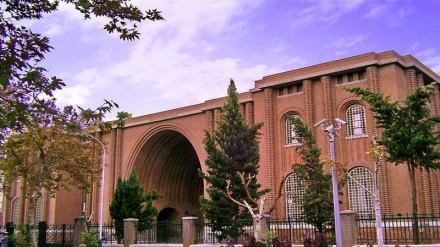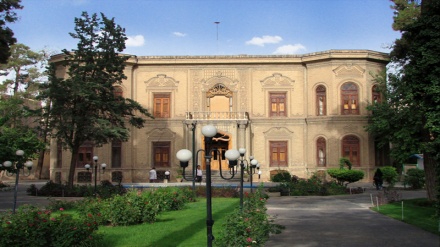Iran Your Attractive Destination (209)
In this episode, we become familiar with the city of Damavand.
Damavand is an ever-green region. The location of this city at the intersection of three important regions of Iran in ancient times, namely Rayy, Qomes, and Tabarestan, has been the main reason behind the significance of this city.
The city of Damavand nestles on the beautiful and scenic foothills of Damavand Mountain, maintaining a unique nature. It is located in the environs of the snow-tipped Damavand Pinnacle. Several rivers which originate from Damavand highly contribute to development of orchards and farmlands that are in proximity to this city, leading to transformation of this scene region into a summer quarter. Warm water and mineral springs and fresh water seasonal, and permanent small and large lakes have all and all displayed the beauties of this region.
The city of Damavand is located on the eastern corner of Tehran Province, and nestles on the southern foothills of Alborz Mountain Range, covering an area of roughly 188,000 hectares.
Based on the studies that have been recently carried out across Tehran Province, mankind has lived in Damavand region as of 14,000 years ago. The initial residents of this region were cavemen, who were hunters.
In accordance to archeological findings, some tourists have referred to Damavand as the most ancient city in the world. This city has been mentioned under its previous names in books such as the Torah, and the book of Zoroastrians, Avesta. According to a number of history books, the first Aryan tribes who entered Iran from the east settled in Damavand region.
In the majority of ancient books, whenever the names of city of Damavand and Damavand Mountain are mentioned, the names of legendary characters within Ferdowsi’s Collection of Poems, Shahnameh, have also been stated; such as Rostam, and Kiumars.
Professor Arthur Christensen, in the book Sassanid Persia, writes that one of the noble families of the Sassanid era resided in Damavand.
In the pre-Islamic era, Damavand was the capital of Zoroastrians’ ruling system for a long time and was therefore of paramount importance. Upon the advent of Islam and conversion of Iranians to the divine religion of Islam, the region of Damavand, which was a vast and populous land, was conquered by Islamic troops, concurrent with the conquest of Rayy and Tabarestan by Muslim forces.
Damavand region bore witness to many ups and downs throughout the uprising of members of Ismaili sect, rule of Saljuqid and Safavid dynasties, and Mongol raids against Iran. This region was also not immune from the wrath of natural disasters, especially earthquakes.
The presence of River Damavand, which runs through this region, existence of mineral water springs, vast plains, non-existence of chilly winds, and appropriate conditions for agriculture and horticulture, in addition to presence of many meadows have laid the ground for farming and animal husbandry in Damavand. More importantly, the city of Damavand has been a temporary settlement for convoys that pass through this city. Economic-wise, Damavand has been a wealthy region and was one of the summer quarters of the rulers of Rayy. The residents of Rayy migrated to mountains in the vicinity of city of Damavand in the summer season. This city was also a temporary settlement for regional cattle ranchers. Town of Damavand also played a protective role for its surrounding castles. The main product of Tabarestan region, which was silk, was transported to Rayy via the city of Damavand.
In the recent decades, the city of Damavand has been of paramount significance, due to its appropriate location, linking Mazandaran Province to the city of Rayy. Also, the good regional climate has set the stage for agriculture, horticulture, and animal husbandry in this city and its environs. Presence of ample sources of underground water and hundreds of creeks, in addition to fresh water springs and permanent rivers has led to development and expansion of apple, pear, cherry, and sour cherry orchards; a rise in production of potatoes, wheat, barley, beans, and summer crops, as well as promotion of floriculture and apiculture. Additionally, presence of ever-green summer quarters, attractive and scenic valleys, vast plains which are engulfed by mountains, mineral water springs, fertile farmlands, clean air, ample orchards and creeks have contributed to transformation of Damavand region into a top tourist destination.
In the recent years, the city of Damavand has swiftly grown; thanks to its appropriate location and proximity to the city of Tehran.
MR/MG


